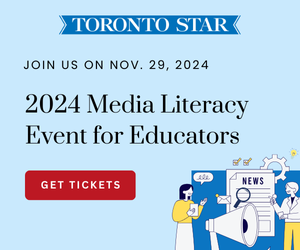
A commission that will document one of the darkest periods in Canada’s history is wrapping up and will report on its findings next year.
Since 2010, The Truth and Reconciliation Commission has been gathering information from First Nations, Inuit and Metis people who were forced to take part in Canada’s “residential (boarding) schools” program.
The program, which ran from the late 1800s until the mid-1900s, was designed to “assimilate” aboriginals–force them to be more like non-aboriginals.
The First Nations people told the commission about suffering they went through as a result of the residential schools program.
More than 150,000 Canadian aboriginals were taken from their homes and put into boarding schools.
The program did great harm by taking the students away from their families and making them speak English instead of their ancestral language. Many of the children were also badly mistreated by the staff and other students.
In 2008, Prime Minister Stephen Harper made an apology on behalf of Canadians to the country’s aboriginal people.
The Truth and Reconciliation Commission was started to give aboriginals a chance to talk about what had happened to them.
Over the past four years, the commission has videotaped more than 6,500 statements from aboriginal people.
The statements will be put into a report which the commission is to publish in June 2015.
The last residential school was closed in 1993.
CURRICULUM CONNECTIONS
By Jonathan Tilly
Writing/Discussion Prompt
The name of the committee that has been asked to report on the experiences of the aboroginal people who attended the residential schools has a very unique name. Why do you think it was given the name: The Truth and Reconciliation Commission?
Reading Prompt: Purpose
Today’s article is connected to many Social Studies topics that are taught in school. How might you use today’s article to help you better understand the Canadian history that you’ve studied this year and in previous years?
Junior & Intermediate
Identify a variety of purposes for reading and choose reading materials appropriate for those purposes (OME, Reading: 1.2).
Grammar Feature: Silent W
The title of today’s story includes a word that begins with a silent w: wrap. Learning how to spell words that begin with silent letters is challenging because they are impossible to sound out.
What other words do you know that begin with a silent letter? What strategy do you use to help you remember?







